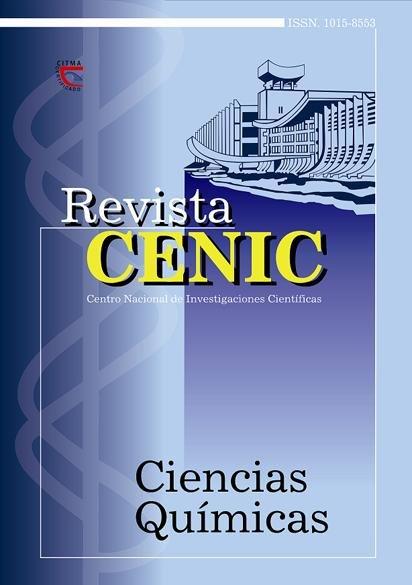Synthesis, crystal and molecular structure of methyl[(4-acetamidophenyl)sulfonyl]carbamate, precursor of herbicide Asulam
Abstract
The methyl[(4-aminophenyl)sulfonyl]carbamate is commercially known as Asulam. It is the most common trade name for a systemic and synergistic herbicide, which is incorporated by the plants through their foliage and roots, and is extensively used against weeds and brackens in the cultivation of gramineous, citric, banana and sugarcane, among others. The industrial procedure for obtaining
this carbamic compound includes the base-catalyzed hydrolysis of the methyl[(4-acetamidophenyl)sulfonyl]carbamate. In this work a simple and conventional method for the synthesis of the Asulam intermediate and the characterization of its crystal and molecular structure utilizing X-Ray Diffraction and IR, NMR 1H and 13C spectroscopic techniques is presented. The synthetic precursor will be
used as substrate of the hydrolytic enzyme in the development of a new biocatalytic preparation of the herbicide Asulam. Therefore, the knowledge of its structure will help not only to define the physical characteristics of its more stable conformation, but also will allow predicting the compatibility between the possible enzymes to be used and the substrate, according to the properties of their catalytic centers. The title compound was synthesized from 4-acetamidophenylsulfonamide and methylchloroformate in the presence of anhydrous K2CO3 and acetone, extracted with ethyl ether and recrystallized from methanol. The studied compound was obtained as crystalline solid in 62% yield. The crystals of intermediate were grown by slow evaporation from methanol solution. They are monoclinic, space group P21/n; a = 8.681(4), b = 8.174(3), c = 17.583(3) Å, ß= 92.40(1) º, Z = 4. The molecular packing shows a bidimensional hydrogen bond network.

Downloads
Published
How to Cite
Issue
Section
License
Copyright (c) 2002 Copyright (c) 2002 Revista CENIC Ciencias Químicas

This work is licensed under a Creative Commons Attribution-NonCommercial-ShareAlike 4.0 International License.
Los autores que publican en esta revista están de acuerdo con los siguientes términos:
Los autores conservan los derechos de autor y garantizan a la revista el derecho de ser la primera publicación del trabajo al igual que licenciado bajo una Creative Commons Atribución-NoComercial-CompartirIgual 4.0 que permite a otros compartir el trabajo con un reconocimiento de la autoría del trabajo y la publicación inicial en esta revista.
Los autores pueden establecer por separado acuerdos adicionales para la distribución no exclusiva de la versión de la obra publicada en la revista (por ejemplo, situarlo en un repositorio institucional o publicarlo en un libro), con un reconocimiento de su publicación inicial en esta revista.
Se permite y se anima a los autores a difundir sus trabajos electrónicamente (por ejemplo, en repositorios institucionales o en su propio sitio web) antes y durante el proceso de envío, ya que puede dar lugar a intercambios productivos, así como a una citación más temprana y mayor de los trabajos publicados (Véase The Effect of Open Access) (en inglés).













